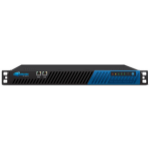Why Web Application Firewalls Appear So Complex


Web application firewalls (WAFs) are designed to protect web applications from a wide range of attacks. A web application firewall (WAF) is a specific form of application firewall that filters, monitors, and blocks HTTP traffic to and from a web service.
Web application firewalls can be very complex. There are a few reasons for this:
As a result of these factors, WAFs can be very complex to understand and configure. However, they are an essential part of any web application security strategy.
Some more in-depth and specific reasons as to why Web Application Firewalls can be complex are:
Web application firewalls are designed to prevent web-facing attacks, so why are there still so many successful attacks? It turns out that organisations’ web properties and customers together are more unique than they are similar. A WAF needs to be configured to each organisation and each set of users. Barracuda WAF-as-a-Service is a full-featured application security service that can start protecting all your apps in just a few minutes. It provides all the power of a traditional web application firewall with the simplicity and ease of a service-delivered WAF.
We hope this blog post has helped you gain more knowledge as to why web application firewalls appear so complex. By understanding the reasons why Web Application Firewalls can be complex, you can better understand how to choose and deploy a WAF that will protect your web applications from attacks. If you have any more questions or are considering purchasing a Barracuda Web Application Firewall, then please contact us:
Web application firewalls can be very complex. There are a few reasons for this:
- Web applications themself are complex. Web applications are made up of many different components, such as web servers, databases, and application code. Each of these components can have its own security vulnerabilities. A WAF needs to be able to protect all of these components from attack.
- Attacks on web applications are complex. Attackers are constantly developing new ways to exploit vulnerabilities in web applications. A WAF needs to be able to keep up with these new attack techniques.
- WAFs can be configured in many different ways. There are many different ways to configure a WAF. The specific configuration that you choose will depend on the specific threats that your web application faces.
- WAFs can be deployed in many different ways. WAFs can be deployed in a variety of ways, such as on-premises, in the cloud, or as a hybrid solution. The deployment method that you choose will depend on your specific needs.
As a result of these factors, WAFs can be very complex to understand and configure. However, they are an essential part of any web application security strategy.
Some more in-depth and specific reasons as to why Web Application Firewalls can be complex are:
- WAFs use a variety of security techniques. WAFs use a variety of security techniques to protect web applications, such as signature-based detection, anomaly detection, and rule-based filtering. Each of these techniques has its own strengths and weaknesses, and the best approach will vary depending on the specific application and threats.
- WAFs need to be able to understand the traffic that is flowing to and from web applications. This traffic can be complex and dynamic, and the WAF needs to be able to analyse it quickly and accurately.
- WAFs need to be able to block malicious traffic without affecting legitimate traffic. This can be a challenge, as legitimate traffic can sometimes contain patterns that are similar to malicious traffic.
- WAFs need to be able to adapt to new attack techniques. Attackers are constantly developing new ways to exploit web applications, so the WAF needs to be able to keep up with these new threats.
Web application firewalls are designed to prevent web-facing attacks, so why are there still so many successful attacks? It turns out that organisations’ web properties and customers together are more unique than they are similar. A WAF needs to be configured to each organisation and each set of users. Barracuda WAF-as-a-Service is a full-featured application security service that can start protecting all your apps in just a few minutes. It provides all the power of a traditional web application firewall with the simplicity and ease of a service-delivered WAF.
We hope this blog post has helped you gain more knowledge as to why web application firewalls appear so complex. By understanding the reasons why Web Application Firewalls can be complex, you can better understand how to choose and deploy a WAF that will protect your web applications from attacks. If you have any more questions or are considering purchasing a Barracuda Web Application Firewall, then please contact us:
Browse some of our Barracuda Web Application Firewall products below!

